The Sinclair Triceratops might look quaint to collectors spoiled modern toy brands, but it’s a very finely-made little figurine that’s quite accurate for its time.
I wasn’t too aware of the history of dinosaur toys and collecting until recently, when I came into the acquisition of a few older figurines from my grandparents’ collection. Although I had played with these toys many times over the years, I hadn’t really given any thought to their background before, but I did notice that three of these figures, a Trachodon, a Stegosaurus, and a Triceratops, were of fairly nicer quality than the rest. Upon revisiting these figurines in the present day, my first impression was that they might be figures from the Marx line, the most iconic and arguably first regular toy producer of dinosaurs. I turned out to be wrong, but not unreasonably so, as these three toys belonged to another giant of classic dino pop culture, the Sinclair Oil Company.
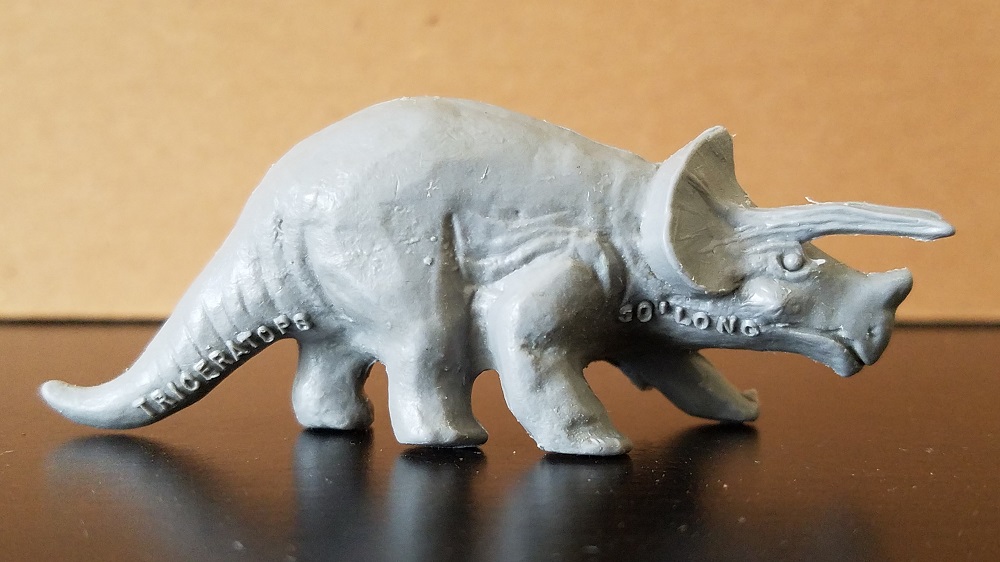
While Marx and other toy companies were pioneering the market for dinosaur figures, Sinclair had made a name for themselves with dinosaur imagery of their own. Along with their mascot character, the green Brontosaurus who would later be named Dino, Sinclair released books, stamps, and other souvenirs to be found at their gas stations, and even went so far as to produce life-size dinosaur models for the 1933-34 World’s Fair in Chicago. This particular event would be repeated by Sinclair for the 1964-65 World’s fair in New York, with an elaborate “Dinoland” exhibit featuring brand new, life-size dino models and a variety of new merchandise to compliment. Nine genera were represented for the World’s Fair, eight of which were transported by a barge down the Hudson River to the main site after completion. The ninth model, a Triceratops, got special treatment and was flown into the Fair carried under a helicopter. Triceratops, of course, has long been one of the most famous dinosaurs, so it’s only natural the “three-horned face” would be represented in Dinoland as well as in associated merchandise. Most of the nine dinos received blow-molded machine figures, and six of them, Triceratops included, also got reproduced as smaller, solid plastic figurines which were sold in bagged sets. It is these of which my grandparents’ toy identities belonged.
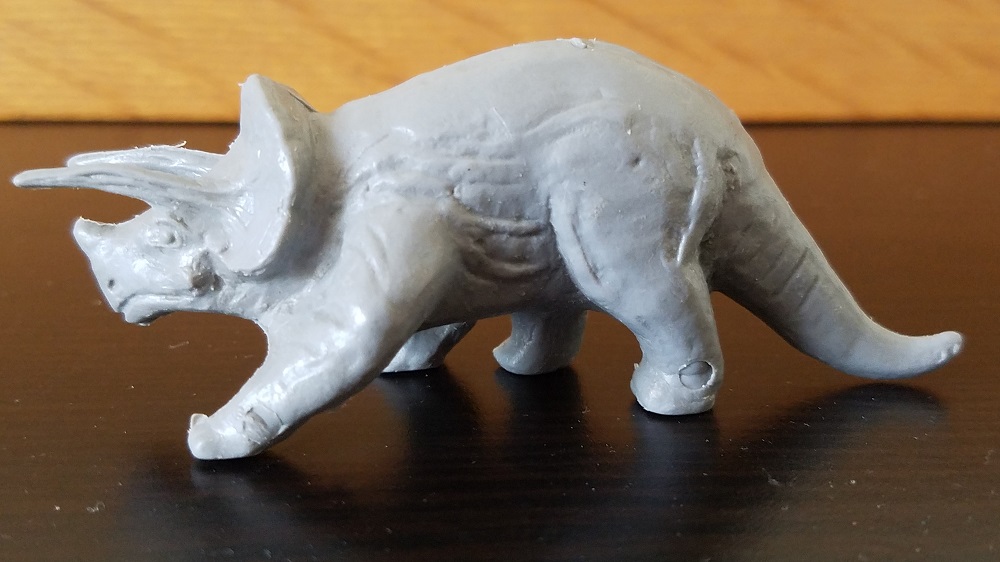
It’s not uncommon for amateur collectors like myself to confuse Sinclair figures with the Marx line; Marx was easily one of the most prolific producers of dinosaur toys in the 50s through the start of the 60s, probably matched only by its direct imitators like MPC and the Hong Kong knockoff companies. Sinclair’s Dinoland merchandise arrived on the tail end of the Marx line’s main run, and their modest six figures simply didn’t have the reach of Marx’s multiple mold series. During the 1980s, Sinclair would even reuse Marx’s molds for new merchandise drives, only making matters more confusing for modern collectors trying to track their figures’ histories. At first glance, the two brands do have similar styles. Upon closer inspection, however, differences between the classic Marx figures and the relatively newer Sinclairs become quite clear to see.
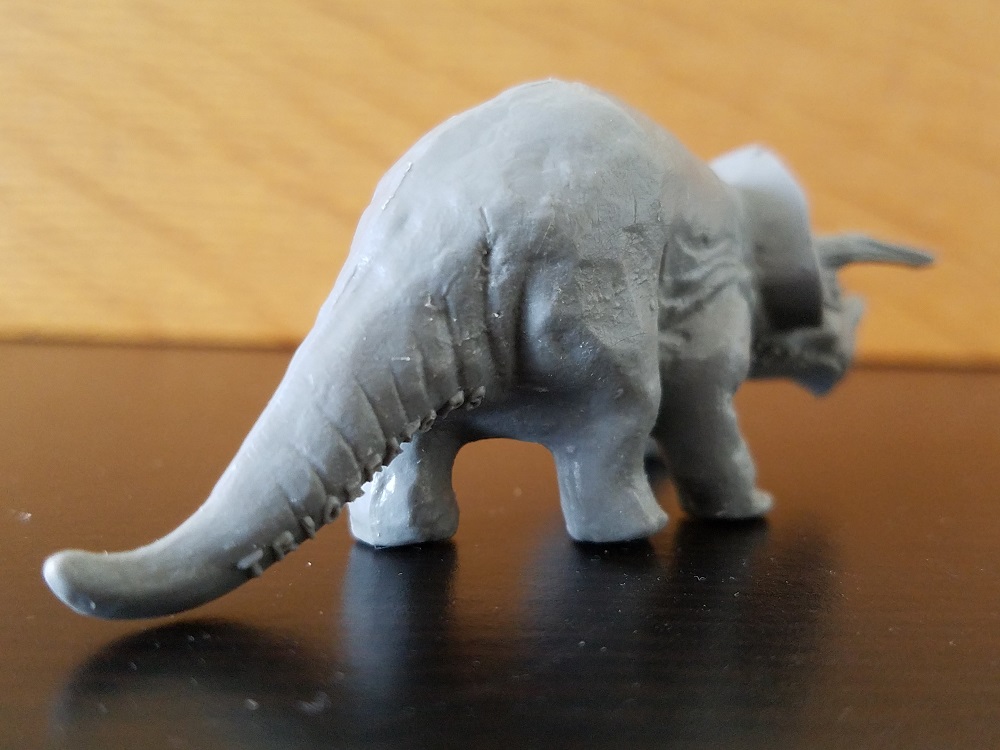
The Sinclair Triceratops is exactly the same size as the Marx trike, measuring about 3.25 inches (8.5 cm) long, and like its older Marx counterpart, both the genus name and the life size are engraved on the body. Interestingly, the Sinclair is listed at 30′ in length, rather than merely 20′ as on the Marx figure. This means the Sinclair is ironically a smaller-scale figure than the Marx (nearly 1:111 scale vs 1:74, rounding), despite the two figures having the same dimensions. Other differences from the Marx model include a narrower snout, slimmer body, and smoother body texture. The two figures make for interesting side-by-side comparisons, reflecting the different times, artists, and influences behind each piece.
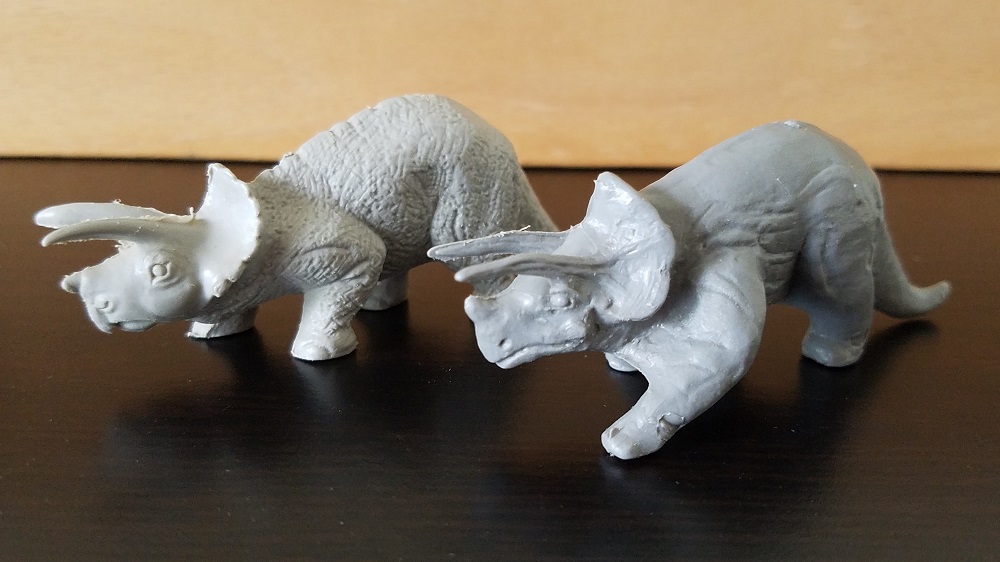
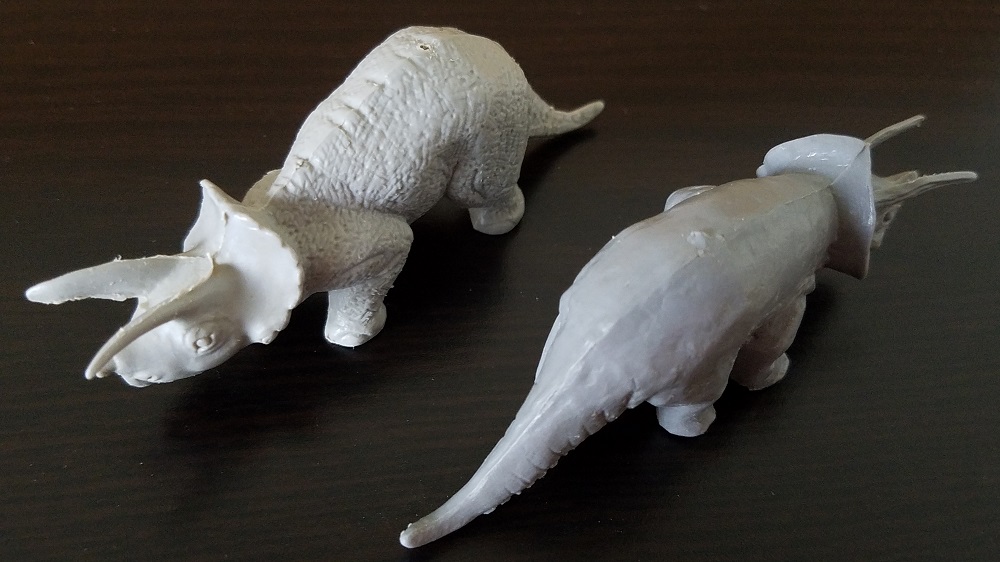
The Sinclair Triceratops is posed to resemble its life-sized fiberglass counterpart produced for the World’s fair, which took inspiration from the art of Charles R. Knight. It’s not hard to picture this little model about to brace for combat with an approaching Tyrannosaurus. The model has its legs in alternating stride with its body curved slightly, giving the impression of a modern-day reptile in motion. Although the body lacks the stippled texture that was commonly seen in Marx figures, folds and creases of skin and muscle are evident along the body and legs. Two beady round eyes are sculpted into the face above a cheekless mouth. Interestingly, although modern reconstructions tend to depict ceratopsians with cheeks, some arguments against this appearance are re-emerging today. The brow horns are mostly straight, slender, and also appear grooved. While the body posture still reflects the generally low-slung body plan supported by the understanding of the time, this model also looks a tad more capable of supporting its own weight, and bearing a more active lifestyle than the earlier Marx toy.
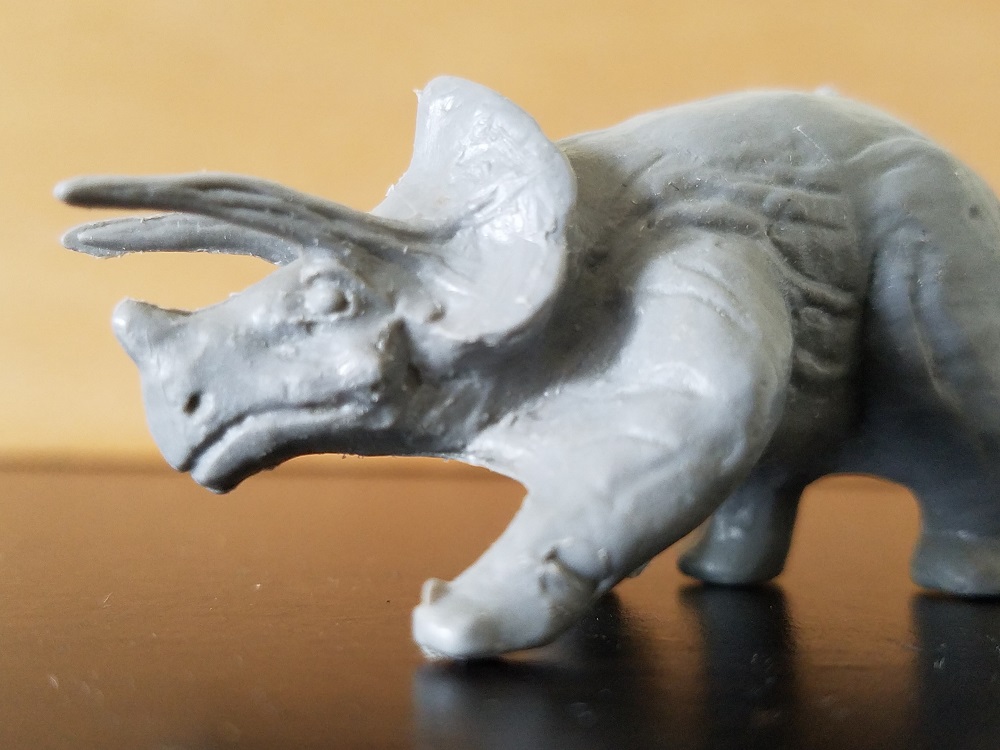
Identifying Sinclair figures can be easy once you know what to look for, but distinguishing original Sinclairs from recasts can be another challenge. In the early 1980s, years after the World’s Fair exhibit, a company called Dimensions For Children (DFC) began releasing playsets utilizing recast dinosaur toys from multiple companies, including those from Sinclair. The quality and appearance of these recasts can vary, and study on these particular figures is less thoroughly published than that of Marx figures, at least to my awareness. However, with the help of more knowledgeable collectors, certain traits can be used to at least make an educated guess on what version of the figures one has obtained.
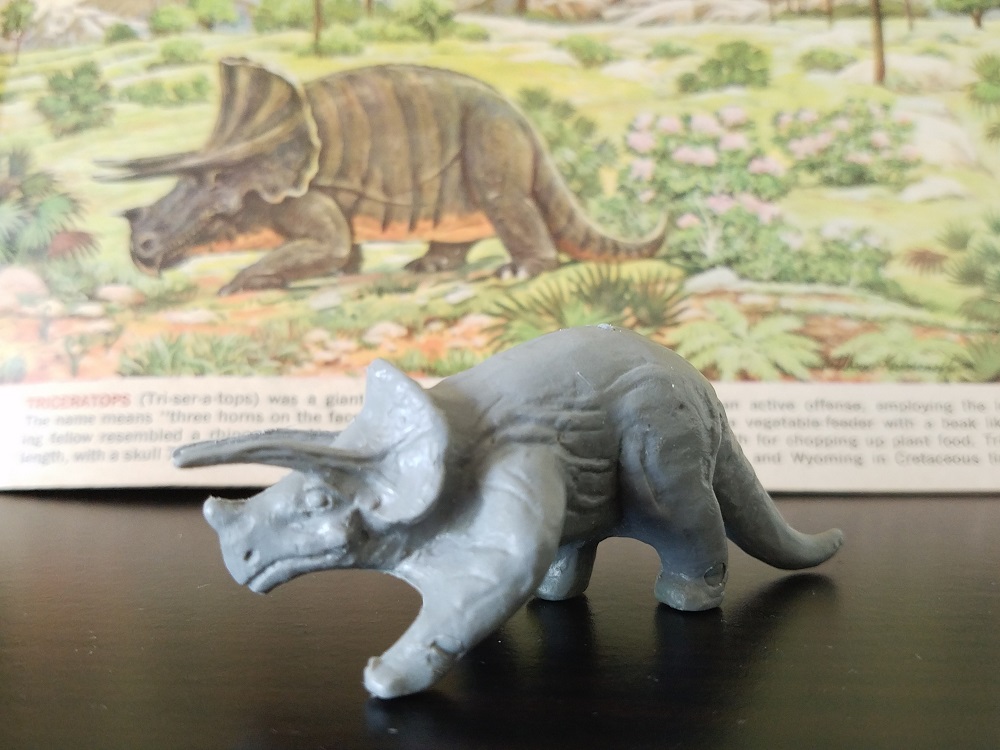
There are two Triceratops figures in my Sinclair collection. The first one is a plain light grey, with engravings on its right side along the throat and tail. Mold circles are present on both left feet, with “seams” running between the limbs along the full length figure’s underside. Original Sinclair Triceratops figures are known to come in this light grey, as well as yellow, red, and occasionally brown. The DFC recasts are known to have come in similar and additional colors, but were often more saturated in hue. Based on my references, my Triceratops is probably an original—typically the originals are known to have their engravings on the left side of the body, but are also occasionally known to have engravings on the right side.
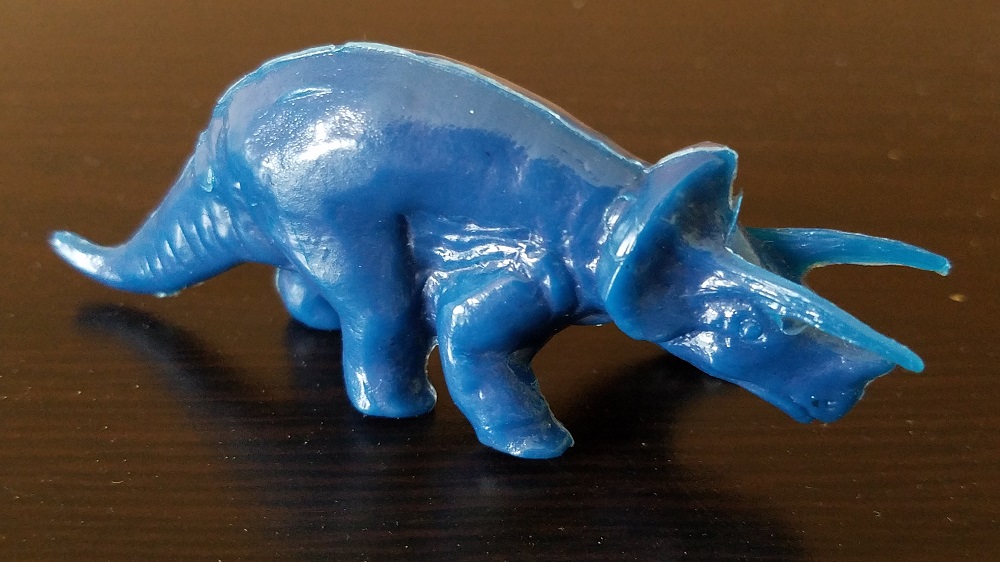
Contrasting the plain grey model is my second Sinclair Triceratops, which is molded in a deep blue, almost translucent at the tips of its horns and tail. This copy has a slightly smoother, more brittle feel to its plastic, and is significantly glossier in the finish. Sculpting details are less fine on this figure, to the point that the name and size engravings, located on the left side of the figure’s stomach and tail, are almost illegible. These are all traits which point to the figure being a DFC recast, rather than a 1964-65 original as my grey version most likely is. The two figures honestly make a nice pair, despite their differences; beginning vintage collectors should find plenty to appreciate in either version.
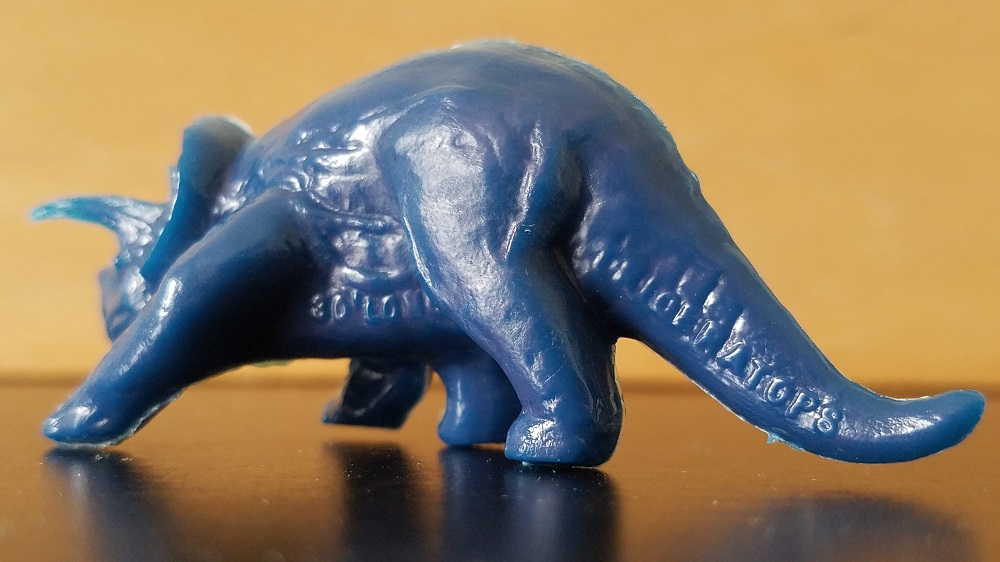

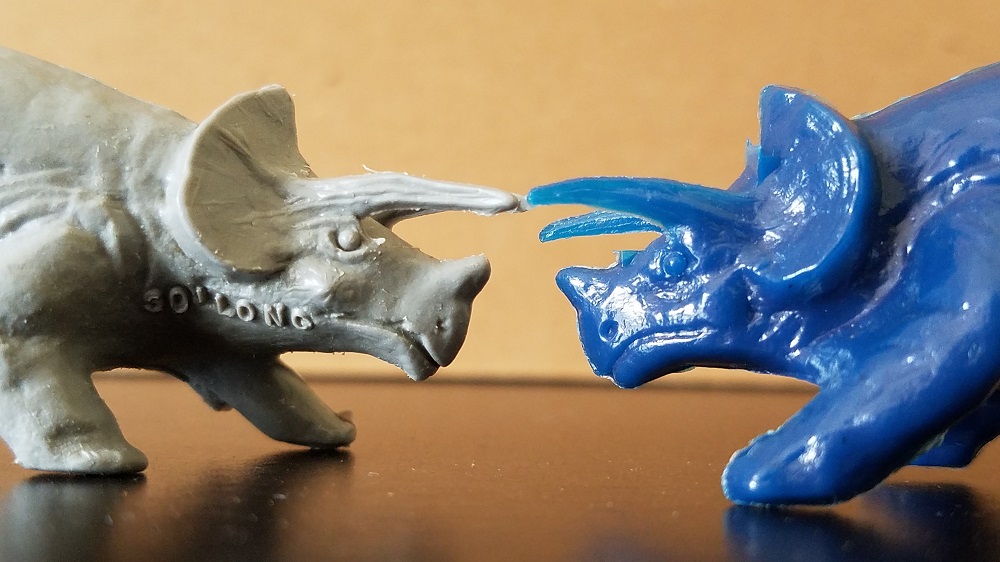
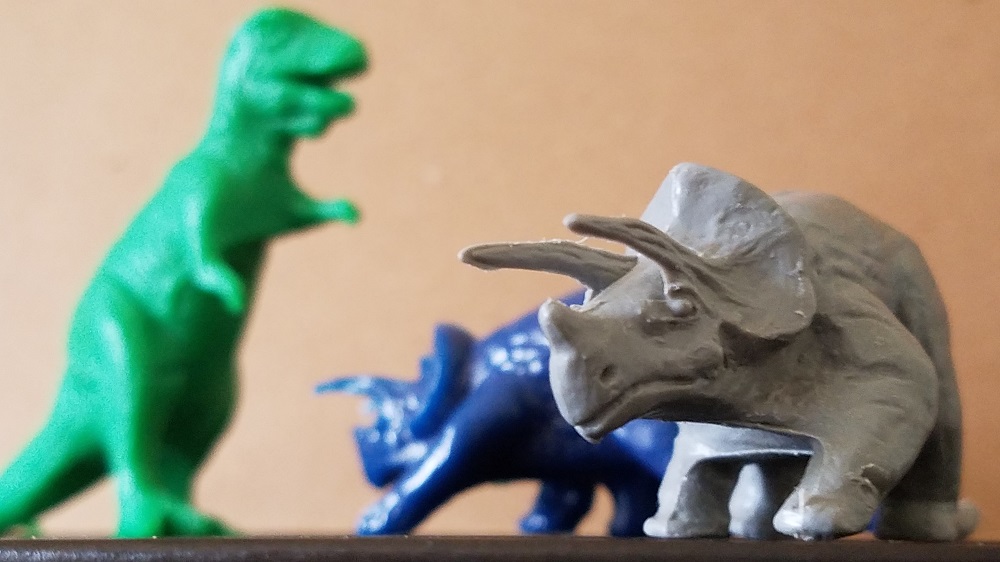
The Sinclair Triceratops might look quaint in the eyes of collectors spoiled on big Safari Ltd. and Papo figures, but it’s a very charming little model that’s capably made for its time and offers a glimpse into an era of dinosaur pop culture which still lingers in our collective memories. Collectors who are feeling a little nostalgic are sure to appreciate the model, provided they can obtain one for themselves. Both the original models and the later recasts can be uncommon now, so I would advise those interested to watch auction or second-hand websites like eBay and Etsy carefully. You never know what might show up in somebody’s used toy lot!
Support the Dinosaur Toy Blog by making dino-purchases through these links to Ebay and Amazon. Disclaimer: links to Ebay.com and Amazon.com on the Dinosaur Toy Blog are often affiliate links, when you make purchases through these links we may make a commission

Great review, very thorough. I collect the Marx toys but I’m not sure if I’ll ever track these Sinclair toys down, I’m glad you’re reviewing some of them though.
Honestly it’s almost a matter of (long-term) chance I ever found out about these. They’re delightful pieces if you can find them. I hope these reviews can be useful for anyone else out there starting like I did.